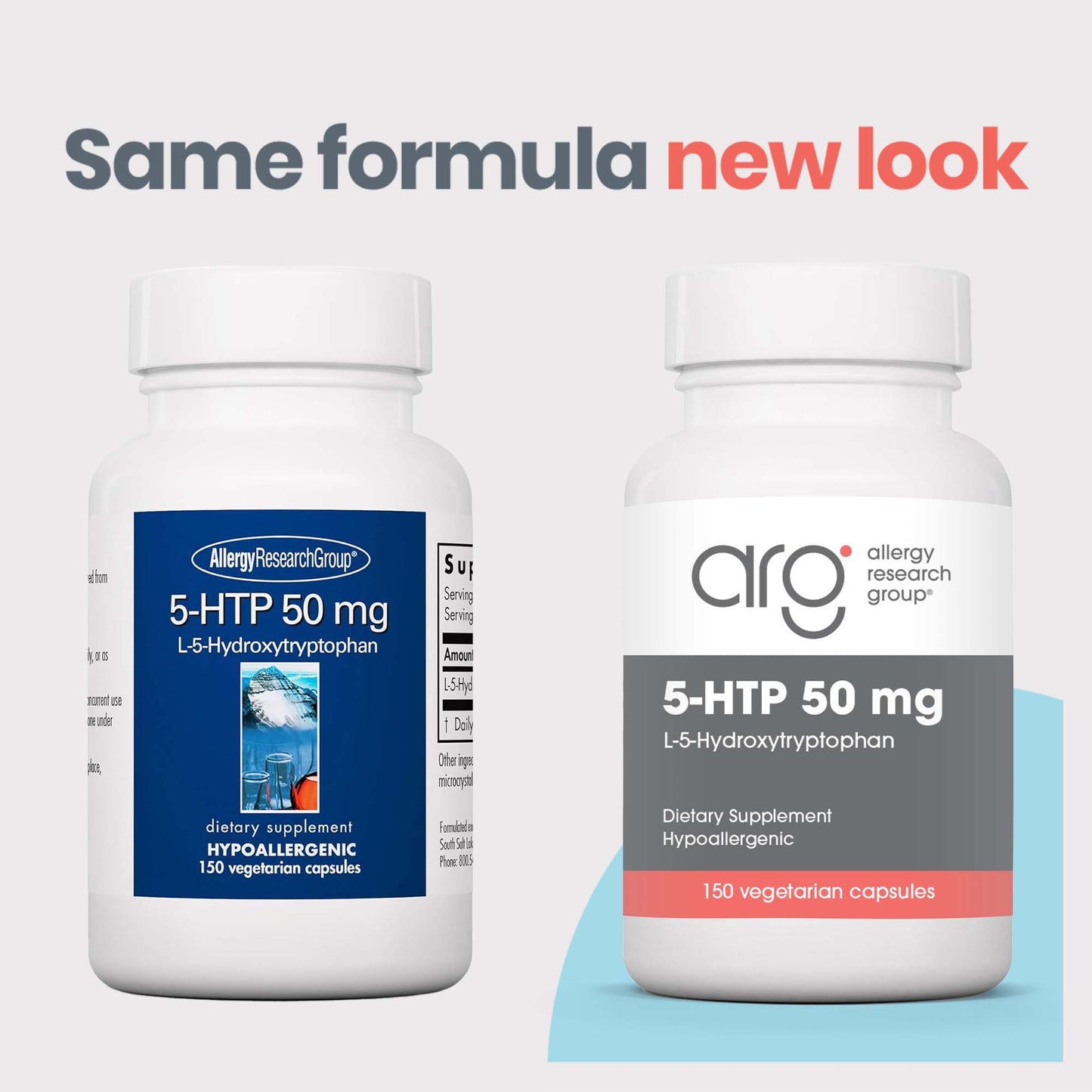Serotonin and Melatonin Precursor for Mood, Sleep, and Appetite Support*
What It Does
5-HTP 50 mg provides 50 mg of L-5-hydroxytryptophan per capsule to support healthy mood, restful sleep, and balanced appetite.* As a direct precursor to serotonin and melatonin, 5-HTP supports neurotransmitter pathways involved in emotional well-being, circadian rhythm regulation, and satiety.*
How It Works
• L-5-Hydroxytryptophan (50 mg): Sourced from Griffonia simplicifolia seed and tested for purity, this amino acid crosses the blood-brain barrier and is converted to serotonin and melatonin.*[1]
• Mood Support: 5-HTP enhances serotonin activity in brain regions linked to emotion and cognition.* Clinical trials using dosages of 150–400 mg per day support mood.*[5-6]
• Sleep Support: Supports deeper, more restful sleep by supporting melatonin levels via serotonin conversion.* Trials in both children and adults show support of sleep quality and sleep architecture.*[7-8]
• Appetite Regulation: 5-HTP supports satiety by enhancing serotonin signaling in the hypothalamus, leading to reduced carbohydrate cravings and food intake.*[9-11]
• Gut-Brain Axis and Microbiome: Supplementation has been shown to increase serotonin levels and positively impact gut microbiome diversity, supporting the role of serotonin in both mood and digestive health.*[8]
• Pharmacokinetics: With a typical half-life of 2–5 hours, 5-HTP is often taken multiple times daily for sustained support.*[2]
• Purity and Source Assurance: Derived from Griffonia simplicifolia and free from known contaminants associated with improperly produced tryptophan derivatives.* Each lot is rigorously tested for identity, purity, and quality.*
Who It’s For
5-HTP 50 mg is ideal for individuals seeking support for mood, sleep quality, or appetite regulation.* It may be particularly helpful during periods of stress.*
Special Features
Sourced from Griffonia simplicifolia seed and tested for contaminants, this clean-label formula provides a clinically relevant, flexible-dose starting point for serotonin and melatonin support.*
References
1. Maffei ME. Int J Mol Sci. 2020;22(1):181. doi:10.3390/ijms22010181
2. Westenberg HGM, et al. Psych Res. 1982;7(3):373–85. doi:10.1016/0165-1781(82)90074-9
3. Wu L, et al. Front Microbiol. 2022;13. doi:10.3389/fmicb.2022.864571
4. Heisler LK, et al. J Neurosci. 2007;27(26):6956–64. doi:10.1523/jneurosci.2584-06.2007
5. Jangid P, et al. Asian J Psych. 2012;6(1):29–34. doi:10.1016/j.ajp.2012.05.011
6. Javelle F, et al. Nutr Rev. 2019;78(1):77–88. doi:10.1093/nutrit/nuz039
7. Bruni O, et al. Eur J Pediatr. 2004;163(7). doi:10.1007/s00431-004-1444-7
8. Sutanto CN, et al. Clin Nutr. 2024;43(3):593–602. doi:10.1016/j.clnu.2024.01.010
9. Voigt JP, Fink H. Behav Brain Res. 2014;277:14–31. doi:10.1016/j.bbr.2014.08.065
10. Cangiano C, et al. Am J Clin Nutr. 1992;56(5):863–67. doi:10.1093/ajcn/56.5.863
11. Ceci F, et al. J Neural Transm. 1989;76:109–11. doi:10.1007/BF01578751





